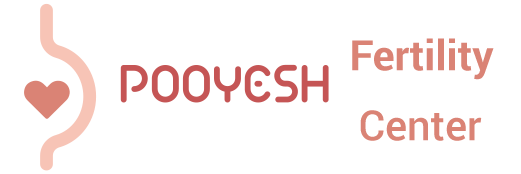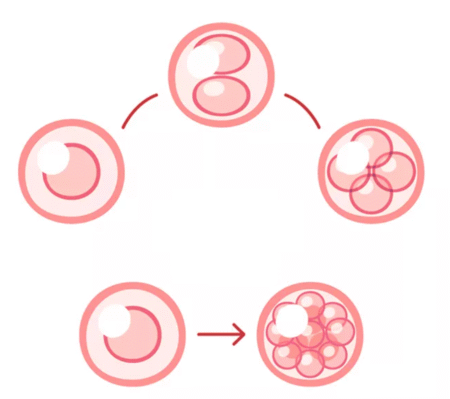Frozen Embryo Transfer (FET)
Frozen Embryo Transfer (FET)
What is Frozen Embryo Transfer?
Frozen Embryo Transfer (FET) refers to the process of thawing and transferring previously frozen embryos which are obtained from earlier IVF or ICSI cycles into the uterus.
When is the Best Time for Transfer?
The ideal time for FET is at least one month (after the second menstrual cycle) following egg retrieval.
Preparation Phase
- The patient should visit the clinic on the first or second day of her menstrual cycle.
- A transvaginal ultrasound will be performed to assess the condition of the ovaries, uterus, and endometrial lining.
- If conditions are favorable, estrogen therapy is initiated to prepare the uterus for embryo implantation.
- Around day 11–12 of the cycle, a follow-up ultrasound is done. Based on the endometrial thickness, the physician will schedule the embryo transfer date.
- Once the date is set, the patient must complete formal admission and documentation procedures.
On the Day of Transfer
- The patient must be accompanied by her partner. If not possible, a notarized legal authorization from the partner is required.
- After thawing and warming the embryos to lab temperature, the patient is guided to the transfer room.
- She lies on the examination bed while the cervix is cleaned and disinfected.
- One or two embryos are then transferred into the uterus under ultrasound guidance using a special catheter.
- After resting for 10–15 minutes, the patient is discharged.
Note: Research shows that extended bed rest post-transfer does not improve pregnancy rate and may even reduce it.
Embryo Survival Rate
A blood test (βHCG) should be performed approximately 2 weeks after the transfer. Home pregnancy tests are not reliable.
- 1 βHCG < 5: Negative result, not pregnant.
- 2 βHCG > 10: Positive, but must be repeated in 48 hours to confirm appropriate increase (ideally doubling every 48 hours for up to 21 days).
- 3 If βHCG levels don’t double or decrease, another test is required after 48 hours to assess embryo viability or detect ectopic pregnancy.
Post-Transfer Care
Rest and Physical Activity
- You can resume normal daily activities 10–15 minutes after the procedure.
- Complete bed rest is not recommended due to risks such as blood clots and stress.
- Avoid intense physical exertion, lifting heavy objects, running, jumping, or standing for prolonged periods.
Bathroom Use and Hygiene
- Using the bathroom is completely safe and does not affect embryo placement.
- Squatting toilets are permitted.
- Avoid straining during bowel movements; stay hydrated, eat high-fiber foods, or use doctor-approved laxatives if constipated.
- Maintain proper genital hygiene and avoid vaginal douching or tampons.
Sexual Activity
- Avoid intercourse for at least 3–14 days post-transfer.
- Choose positions that avoid deep penetration or pressure on the abdomen.
- Report any pain, spotting, or discomfort to your doctor.
- Use non-spermicidal lubricants if needed.
- Consider non-intercourse intimacy such as hugging or massage if you're concerned.
Returning to Work
- If your job involves heavy lifting or standing for long periods, it's best to take time off.
- For desk jobs, returning to work the next day is generally safe.
- Take breaks to stretch and walk, and avoid long periods of inactivity.
- If your job is stressful, consider taking a few days off after the procedure.
- Wear loose clothing and eat nutritious snacks at regular intervals.
Travel
- Travel is generally safe post-transfer if done comfortably.
- Avoid travel in the first few hours after the procedure.
- Use pillows for lumbar support and take breaks to walk during long journeys.
- Air travel is typically safe; however, avoid long flights within the first 48–72 hours if possible.
- Avoid lifting heavy luggage and stay hydrated throughout the trip.
Exercise
- Begin light walking two days after the transfer.
- Gentle stretching, yoga, meditation, and deep breathing exercises are encouraged.
- Avoid high-impact activities, weightlifting, aerobic exercises, or abdominal workouts.
- Swimming, hot tubs, and saunas are discouraged due to infection risk.
Nutrition
Recommended Foods:
- Lean proteins (chicken, fish like salmon, eggs, lentils, beans)
- Healthy fats (avocados, nuts, olive oil)
- Complex carbs (whole grains, brown rice, quinoa, oats, sweet potatoes)
- Iron-rich foods (spinach, kale, red meat, lentils)
- Folate and B12-rich foods (leafy greens, citrus fruits, peas, green beans)
- Fresh fruits and vegetables
- High-fiber foods
- Antioxidant and anti-inflammatory foods (ginger, turmeric, berries, omega-3-rich foods)
- Water (2–3 liters daily)
Foods to Avoid:
- Mercury-rich fish
- Unpasteurized dairy
- Raw/undercooked meat and eggs
- Processed foods (sausages, deli meats)
- Junk food (chips, snacks)
- Trans fats
- Excessive caffeine (>200 mg/day)
- Alcoholic beverages
Spotting or Bleeding Post-Transfer
Spotting is common and may result from hormonal changes, embryo implantation, or vaginal suppositories. It is not a definitive sign of failed pregnancy. If bleeding occurs:
- Stay calm
- Do not stop medications without consulting your doctor
- Rest
- Avoid heavy lifting and sexual activity
- Contact the clinic or reach out via phone or social media for guidance
Illness After Transfer
Mild illnesses such as colds or flu usually do not affect embryo implantation.
- Stay hydrated and get enough rest
- Use natural remedies like saline nasal spray or honey-lemon tea
- Avoid self-medicating without your doctor’s approval
- Consult a doctor if you have fever, persistent cough, or concerning symptoms
- Maintain a vitamin-rich diet and consult about Vitamin C or supplements
Progesterone Suppository Guidelines
- Follow the prescribed schedule to maintain consistent hormone levels
- Wash hands before and after use
- Choose a comfortable position (lying down, leg raised, or squatting)
- Insert the suppository gently about 3–5 cm into the vagina
- Remain lying down for 10–15 minutes post-insertion
- Nighttime insertion is ideal
- Use panty liners to manage discharge
- Check storage requirements (some may need refrigeration)
- Common side effects include mild irritation or odor—report anything unusual to your doctor
- Avoid tampons, douching, or vaginal products unless directed by your doctor
Progesterone Injection Guidelines
- Continue injections until pregnancy is confirmed; continue as advised if pregnant
- Do not refrigerate. It will increases injection pain
- Warm the ampoule in your hands before injecting
- Alternate injection sites between left and right sides
- Avoid injecting into bruised or hardened areas
- Apply ice before injection or use topical anesthetic to reduce discomfort
- Insert the needle quickly at a 90° angle and inject slowly
- Keep the muscle relaxed. inject while lying down and shift weight to the opposite leg
- Massage the injection site and apply warm compress afterward
- Drink plenty of fluids and eat a balanced diet
- Avoid strenuous activity immediately after injection
- Consult your doctor if pain persists. He/She may recommends switching to suppositories
FET Success Rates
Frozen embryo transfer success depends on multiple factors including the woman’s age, the cause of infertility, embryo quality, and the transfer technique. On average, FET success rates range between 30% and 40%.

